
Σώμα (8)
Tummy tuck is a major surgical procedure that involves the removal of skin and fat from the lower 2/3 of the abdominal wall and allows tightening of the abdominal muscles.
Aim of the tummy tuck
Tummy tuck allows the dramatic reduction in size of a prominent belly and may significantly improve the shape of the body. The procedure does not aim at reducing body weight and in no case should it be considered as a slimming method.
Read more about tummy tuck

Η νέα No Pain τεχνική τώρα και στην κοιλιοπλαστική
Πως γεννήθηκε η No Pain - Νo Drain τεχνική στην Κοιλιοπλαστική
Νέα τεχνική στην κοιλιοπλαστική - Greek Line - (Champagne Groove Technique)
Διάσταση των ορθών κοιλιακών μυών
Ideal tummy tuck candidates
The ideal candidates for a tummy tuck are women and men who have good health but are concerned about the size and shape of their abdominal wall, excess fat and loose skin that can no longer be treated with diet and exercise.
Tummy tuck is also advisable for patients who have undergone bariatric surgery (weight-loss surgery) and have since developed abdominal lipodystrophy.
Women who have had multiple pregnancies are also good candidates for this procedure. These women experience muscle and skin laxity that cannot be corrected with exercise.
Patients who are planning to follow a diet regimen must first complete the diet and then undergo a tummy tuck. Also, women who are planning to become pregnant in the future should postpone their tummy tuck, since the abdominal muscles on which the tummy tuck is performed will become flaccid again during pregnancy.
Patients previously submitted to specific surgical procedures on the abdomen that have left behind scars on specific areas, may not be eligible for a tummy tuck.
It must be noted that this operation can be combined with other surgical procedures such as liposuction and breast reduction or augmentation.
Watch Tummy Tuck videos
 IMCAS Paris 2019 - Shaping the hourglass: sculpting the waist with the one incision Papillon Technique
IMCAS Paris 2019 - Shaping the hourglass: sculpting the waist with the one incision Papillon Technique Πλαστική χειρουργική: Επαναστατικές τεχνικές με ελληνική υπογραφή - Συνέντευξη στο vita
Πλαστική χειρουργική: Επαναστατικές τεχνικές με ελληνική υπογραφή - Συνέντευξη στο vita  Κοιλιοπλαστική Non Touch Non Pain - 11ο Πανελλήνιο Συνέδριο Πλαστικής Χειρουργικής
Κοιλιοπλαστική Non Touch Non Pain - 11ο Πανελλήνιο Συνέδριο Πλαστικής Χειρουργικής  Νέα επαναστατική τεχνική στην κοιλιοπλαστική No touch - No pain - No drain
Νέα επαναστατική τεχνική στην κοιλιοπλαστική No touch - No pain - No drain  Κοιλιοπλαστική - Μαρτυρίες ασθενών αμέσως μετά το χειρουργείο
Κοιλιοπλαστική - Μαρτυρίες ασθενών αμέσως μετά το χειρουργείο  Η Νέα Κοιλιοπλαστική χωρίς πόνο όπως παρουσιάστηκε στο MEGA!
Η Νέα Κοιλιοπλαστική χωρίς πόνο όπως παρουσιάστηκε στο MEGA! LIVE - Κοιλιοπλαστική και ανόρθωση στήθους
LIVE - Κοιλιοπλαστική και ανόρθωση στήθους Παχυσαρκία Κυκλοτερής Λιπεκτομή Κοιλιοπλαστική EXTREME MAKE OVER - MEGA
Παχυσαρκία Κυκλοτερής Λιπεκτομή Κοιλιοπλαστική EXTREME MAKE OVER - MEGA MACS face lift, Κοιλιοπλαστική Ανόρθωση Στήθους EXTREME MAKE OVER - MEGA
MACS face lift, Κοιλιοπλαστική Ανόρθωση Στήθους EXTREME MAKE OVER - MEGA
Επαναδιαμόρφωση Σώματος
Το πρόβλημα της παχυσαρκίας δυστυχώς αυξάνεται αλματωδώς σε όλο τον αναπτυγμένο κόσμο. Οσον αφορά τους Έλληνες η εξέλιξη του προβλήματος υπήρξε ραγδαία τα τελευταία χρόνια με αποτέλεσμα να κατέχουμε πλέον την 9η θέση παγκοσμίως στην λίστα των πιο παχύσαρκων λαών!
Υπάρχουν όμως και πολλοί παχύσαρκοι άνθρωποι που έχουν την δύναμη και την αποφασιστικότητα μέσω δίαιτας ή μέσω βαριατρικών χειρουργικών παρεμβάσεων (π.χ. δακτύλιος, γαστρικό by-pass κλπ) να χάσουν πολλά από τα περιττά κιλά τους. Δυστυχώς όμως δεν τελειώνουν εκεί, γιατι οι ασθενείς αυτοί μετά την απώλεια του μεγάλου βάρους τους παραμένουν με ένα άλλο μεγάλο προβλημα : την μεγάλη χαλάρωση και περίσσια δέρματος που υφίστανται σε περιοχές του σώματος όπως: η κοιλιά, η μέση, το εσωτερικό τμήμα των μηρών, οι βραχίονες , το στήθος και το πρόσωπο.
Αυτή η περίσσεια δέρματος εκτός του ότι είναι σχεδόν παραμορφωτική τους εμποδίζει να ντυθούν, να κινηθούν και βέβαια να αισθανθούν ότι όντως κατάφεραν να ξεφύγουν από την προηγούμενη κατάσταση τους. Σε αυτούς λοιπόν τους ασθενείς απευθύνεται το Body contouring
Δείτε φωτογραφείς μετά από επαναδιαμόρφωση σώματος
https://www.keramidasevangelos.com/botox-%CF%80%CF%81%CE%B9%CE%BD-%CE%BC%CE%B5%CF%84%CE%B1/content/4-2017-10-21-14-07-44#sigProId7085b45054
https://www.keramidasevangelos.com/botox-%CF%80%CF%81%CE%B9%CE%BD-%CE%BC%CE%B5%CF%84%CE%B1/content/4-2017-10-21-14-07-44#sigProId828ba75c31
https://www.keramidasevangelos.com/botox-%CF%80%CF%81%CE%B9%CE%BD-%CE%BC%CE%B5%CF%84%CE%B1/content/4-2017-10-21-14-07-44#sigProIde7248b6fdf
https://www.keramidasevangelos.com/botox-%CF%80%CF%81%CE%B9%CE%BD-%CE%BC%CE%B5%CF%84%CE%B1/content/4-2017-10-21-14-07-44#sigProId5a700ad6e5
Liposuction (or liposculpture) is a surgical procedure that involves the removal of fat tissue from specific areas of the Body (abdomen, thighs, knees, neck).
The aim of liposuction
This surgical procedure aims at improving the shape of specific areas of the Body, whether performed alone or in combination with other procedures, such as abdominoplasty. It does not offer weight loss for which diet and exercise is advised.
What procedures can we perform today to correct hanging buttocks?
In the recent years, women tend towards well-shaped but more feminine silhouettes. The increase of procedures that involve improvement of buttocks’ appearance is high and has led to the development of new surgical techniques.
The American Society of Aesthetic Plastic Surgery announced a five-time increase in the number of buttock lift procedures compared to the previous year. With existing techniques, we can achieve lifting, reshaping as well as resizing the buttocks. In particular, we use the classic buttock lift procedure and more recent techniques in Liposculpture, silicon implant or fat placement - Liporecycling (using fat from the same patient to enhance the size of the buttocks). The above procedures are performed under general anaesthesia and require one day of hospitalisation. They can be performed alone or in combination with each other depending on the problems that need to be fixed and the desired aesthetic result. However, as is the case in all aesthetic procedures, the evaluation and treatment of each patient is fully individualised.
Body Contouring after Dramatic Weight Loss
Unfortunately, the problem of obesity is rapidly rising all around the developed countries. When it comes to Greeks, the situation has worsened during the past years; as a result, Greece now ranks 9th among the most obese countries in the world!
However, there are many obese people who are strong enough and determined to lose much of their excess weight through diet or bariatric surgery (e.g. gastric band, gastric bypass etc). Unfortunately, however, that is not where their misfortune ends, since, after loosing a great amount of weight, these patients are faced with another problem: extended laxity and excess skin in body areas such as the abdomen, waist, inner thighs, arms, breasts and face.
Apart from disfiguring them, excess skin does not allow these individuals to dress up, move around easily and of course feel like they have actually managed to escape the negative consequences of their previous condition. This is the target group for Body contouring
Body contouring photos
https://www.keramidasevangelos.com/botox-%CF%80%CF%81%CE%B9%CE%BD-%CE%BC%CE%B5%CF%84%CE%B1/content/4-2017-10-21-14-07-44#sigProId7085b45054
https://www.keramidasevangelos.com/botox-%CF%80%CF%81%CE%B9%CE%BD-%CE%BC%CE%B5%CF%84%CE%B1/content/4-2017-10-21-14-07-44#sigProId828ba75c31
https://www.keramidasevangelos.com/botox-%CF%80%CF%81%CE%B9%CE%BD-%CE%BC%CE%B5%CF%84%CE%B1/content/4-2017-10-21-14-07-44#sigProIde7248b6fdf
https://www.keramidasevangelos.com/botox-%CF%80%CF%81%CE%B9%CE%BD-%CE%BC%CE%B5%CF%84%CE%B1/content/4-2017-10-21-14-07-44#sigProId5a700ad6e5
Calf augmentation is a plastic surgery procedure performed to increase the volume of the calves. This way symmetry of the legs and body is achieved.
Who is the ideal candidate for calf augmentation?
 |
|
Men or women who experience a reduction of the muscular substance of the calf
How is the procedure performed?
There are 3 ways to perform a calf augmentation procedure:
- Silicon implants
- Fat transfer
- Hyaluronic acid injection
Α) Silicon implants
This is the most common method used and the only one that can yield a permanent result as well as significant enhancement of the calf volume. Silicon implants come in a great variety of shapes and sizes. They are either placed above or below the muscle (gastrocnemius). They usually enhance the inner belly of the muscle although they can be placed on both bellies of the muscle. Placement is performed with local anaesthesia or a combination of local anaesthesia and sedation or epidural anaesthesia. The procedure lasts 40 minutes and the patient can go home on the same day. The incision is 3-4 cm long, made behind the knee.
Complications from the use of implants
- inflammation
- haemorrhage
- hygroma (fluid concentration)
- capsular contracture
- implant dislocation
- deep venous thrombosis
Although complications are rare when patient is in good hands, these must be thoroughly discussed with your plastic surgeon.
What is recovery like after implant placement?
Patients may go back to work within 7 days, depending, however, on the method the doctor has used. You should expect light pain after surgery and slight bruising and swelling.
- Straight after surgery, feet are placed on two pillows
- For the first few days, it is advisable to place your legs high when sitting on a chair
- Wear slippers or low-heel shoes (4-6 cm high)
- You may walk immediately after surgery, but you must not overdo it since there is a risk of hygroma (fluid concentration) and implant dislocation.
- Running is allowed 6 weeks after surgery.
- If visiting from out of Athens, it is better to be accompanied by an adult.
- When lying down, keep moving your toes and feet.
- Do not shave your legs for 2-4 weeks and avoid sunbathing for 4-6 months.
https://www.keramidasevangelos.com/botox-%CF%80%CF%81%CE%B9%CE%BD-%CE%BC%CE%B5%CF%84%CE%B1/content/4-2017-10-21-14-07-44#sigProId25f2b673db
| Τεχνική | Ενθέματα σιλικόνης |
https://www.keramidasevangelos.com/botox-%CF%80%CF%81%CE%B9%CE%BD-%CE%BC%CE%B5%CF%84%CE%B1/content/4-2017-10-21-14-07-44#sigProIdab83d0de4c
| Τεχνική | Ενθέματα σιλικόνης |
https://www.keramidasevangelos.com/botox-%CF%80%CF%81%CE%B9%CE%BD-%CE%BC%CE%B5%CF%84%CE%B1/content/4-2017-10-21-14-07-44#sigProIdff0ee8bf6d
| Τεχνική | Ενθέματα σιλικόνης |
Β) Fat transfer for Calf Augmentation
Liporecycling is a technique used to remove fat from certain areas of the body and re-infuse it into the calves. Usually 75-150 cc of fat is necessary for each calf. The procedure is performed with local anaesthesia and no hospitalization is necessary.
The technique used for fat grafting also affects the way fat will be absorbed by the body.
The volume achieved with fat transfer is usually smaller compared to the volume silicone implants yield.
Advantages
- Use of tissue from same patient
- Possibility of fewer complications , e.g. inflammation, haemorrhage
- No contracture possibility
Disadvantages
- Difficulty in estimating the shape and size of application following surgery
- Part of the fat will be absorbed, and we might need to make a second or third effort to place the fat again.
- Ο ασθενής πρέπει να έχει τουλάχιστον 150-200 cc λίπος σε άλλες περιοχές του σώματός του
https://www.keramidasevangelos.com/botox-%CF%80%CF%81%CE%B9%CE%BD-%CE%BC%CE%B5%CF%84%CE%B1/content/4-2017-10-21-14-07-44#sigProIdd3bc2ff84f
| Τεχνική | Λιπομεταφορά για την Αύξηση της Γάμπας |
C) Use of Hyaluronic Acid (Macrolane)
High-density hyaluronic acid in 20 cc syringes is used. A repeat session must take place after 12-18 months because hyaluronic acid is absorbable. The procedure is performed under local anaesthesia, without incisions.
https://www.keramidasevangelos.com/botox-%CF%80%CF%81%CE%B9%CE%BD-%CE%BC%CE%B5%CF%84%CE%B1/content/4-2017-10-21-14-07-44#sigProId12315fd3d7
| Τεχνική | Χρήση του Υαλουρονικού Οξέος (Macrolane) |
Is calf augmentation a common procedure?
Calf augmentation is a plastic surgery procedure which, although only performed by a few experienced plastic surgeons, has become quite common during the last years.
Men choose to undergo this procedure to gain volume on their legs.
Women usually undergo the procedure to gain symmetry in their anatomy, so that their calves will appear to be in harmony with their thighs. Patients also opt for this procedure in cases of curved or asymmetric calves or in the abovementioned cases of:
- poliomyelitis
- spina bifida
- club fit
Diastasis of the rectus abdominis muscles or diastasis recti
Written by spyrosAnatomy of the rectus abdominis muscles
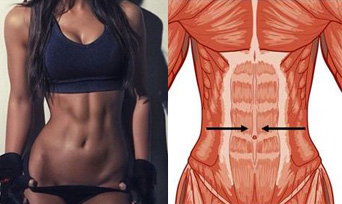
By nature, the rectus abdominis muscles are located in the centre of the abdomen and consist of two parallel muscles extending from the ribs and reaching the pubic bone. These two parallel muscles are separated by a midline band of connective tissue called the "linea alba”.
What is diastasis recti?

Certain situations cause separation of the rectus abdominis muscles from the centre of the abdomen and stretching of the connective tissue (linea alba).
This situation is called diastasis recti or abdominal separation.
Who can develop this condition?

It occurs more frequently in pregnant women over the age of 35, in multiple pregnancies or when the baby is too big. Also, in newborns and, rarely, in men.
Newborns should be monitored frequently.
Pregnant women may develop abdominal separation due to intense stretching of the rectus abdominis during pregnancy. The problem is obvious after childbirth.
Clinical presentation

In the case of abdominal separation, the abdomen protrudes and is similar to a baby bump.
Abdominal separation is primarily an aesthetic problem. This is because the uterus, colon and small intestine as well as other organs within the abdomen are pushed outwards, as the abdominal muscles can no longer hold them together.
Diastasis recti, apart from being an aesthetic problem, can also cause back pain, constipation and urinary incontinence.
Sometimes it makes breathing and even moving around difficult.
Surgical treatment
 Treatment always requires surgery. It is almost always combined with abdominoplasty since women who have developed abdominal separation also suffer from significant skin sagging around the abdomen.
Treatment always requires surgery. It is almost always combined with abdominoplasty since women who have developed abdominal separation also suffer from significant skin sagging around the abdomen.
The rectus abdominis muscles are relocated at the midline with sutures. Placing a mesh is almost never necessary.
Sometimes herniation may also be present. The doctor will advise you to do an ultrasound for herniation diagnosis.
Difference between hernia and diastasis recti

The diastasis recti is not an abdominal hernia nor is it life threatening.
In the case of a hernia, the abdominal organs push through the rectus abdominis muscles. In diastasis recti, there is no contact and the organs of the abdomen do not protrude beyond the rectus abdominis muscles.
Self-examination
Step 1: Lie on your back. Bend your knees and place the soles of your feet on the floor.
Step 2: Lift up your head
Step 3: Put your fingers in the middle of the abdomen. Move your fingertips to feel the gap between the abdominal muscles.
Photos of diastasis recti cases
https://www.keramidasevangelos.com/botox-%CF%80%CF%81%CE%B9%CE%BD-%CE%BC%CE%B5%CF%84%CE%B1/content/4-2017-10-21-14-07-44#sigProId898eb42aeb
https://www.keramidasevangelos.com/botox-%CF%80%CF%81%CE%B9%CE%BD-%CE%BC%CE%B5%CF%84%CE%B1/content/4-2017-10-21-14-07-44#sigProId415858341b
https://www.keramidasevangelos.com/botox-%CF%80%CF%81%CE%B9%CE%BD-%CE%BC%CE%B5%CF%84%CE%B1/content/4-2017-10-21-14-07-44#sigProId681720e163
https://www.keramidasevangelos.com/botox-%CF%80%CF%81%CE%B9%CE%BD-%CE%BC%CE%B5%CF%84%CE%B1/content/4-2017-10-21-14-07-44#sigProIdc26baa3528
https://www.keramidasevangelos.com/botox-%CF%80%CF%81%CE%B9%CE%BD-%CE%BC%CE%B5%CF%84%CE%B1/content/4-2017-10-21-14-07-44#sigProId880164cfa7
What is a Mommy Makeover
Literally, it is a total body transformation.
In recent years, plastic surgeons have witnessed a new social phenomenon. Mothers aged 25-50 who have had children, decide to give themselves a gift. They choose to restore their body.
Identifying the problem
After pregnancies and when children are starting to grow, mothers decide that they deserve to get their lives back. Although they feel satisfied with their families, they feel that their body has lost its former glory.
Taking action
A combination of surgical procedures in upper and lower body can be performed to correct the changes brought about by pregnancies, breastfeeding and years of neglect.
Which is the most common surgical procedure?
It is customary to have multiple surgical procedures performed at the same time. The most popular combination involves breast surgery (lift or augmentation), tummy tuck and liposuction.
Isn’t it dangerous to have several procedures done together?
20 years ago, combining many surgeries was considered innovative yet risky, but thanks to improvements made on the techniques and the new safety features installed in operating rooms, combined surgical procedures can now be easily carried out.
Are there any prerequisites for multiple surgical procedures?
Yes, first of all, we need a healthy patient and of course, a talented, experienced surgeon.
Are there any examples of such multiple surgeries available?
In 2008 we participated in a TV show hosted by MEGA TV, a Greek television channel. During the show, we performed long surgical procedures on 3 patients. These were considered mommy makeovers. Mrs. Maria Tsalapatani underwent a facelift, breast reduction, tummy tuck and liposuction during a 6-hour surgery. Mrs. Froso Miliakidou underwent a 6-hour surgery involving a belt lipectomy and a face lift performed at the same time. Mrs. Areti Papa had a facelift, tummy tuck and breast reduction.
Although somehow rare and intimidating to patients, multiple surgical procedures are nowadays absolutely safe. It is worth noting that the pioneers in multiple surgical procedures were talented plastic surgeons. Among them, Dennis Hurwitz, a top surgeon of the new generation, and Pitanguy, the founding father of plastic surgery.
The secrets of success are:
- Strict patient selection and preparation. The patient must be healthy.
- Use of new technology to avoid complications (anticoagulation protocols, anti-thrombosis socks, mechanical calf compression during and after surgery, electric blankets while on the operating table. Patient evaluation based on the Caprini/Davison model to determine those who are most likely to develop deep vein thrombosis).
- Use of innovative, blood-free and safe surgical techniques, such as the non-touch-non pain approach in breast augmentation now also used in tummy tuck, radio-waves (bodytite) in liposuction or V smasectomy in Facelift.
- Great attention to postoperative follow-up (quick mobilization of the patient, minimal postoperative pain, prophylaxis against thrombosis and embolism, special diets).
- Quick, talented and experienced surgeon.
Patients should know that these operations can be safely performed. The most common combination of surgical procedures involves:
- Breast augmentation – Tummy tuck – Liposuction
- Breast lift – Breast reduction
- Belt lipectomy – Liposuction
- Facelift , Blepharoplasty, Neck lift
Are there patients who undergo only one operation and, if yes, which is the most common procedure?
Of course, it is not necessary for a patient to undergo all these procedures. Quite often, we only perform one or two procedures on mothers/patients. Breast Augmentation, breast lift, liposuction or tummy tuck.
Since 1997 there has been an increase of 539% in breast lifts and an increase exceeding 339% in tummy tucks, based on data provided by ASAPS (the American Society of Aesthetic Plastic Surgery).
What is the difference between a Full Body Lift and a Mommy makeover?
The Full Body Lift is performed on patients who were obese and have lost a significant amount of weight either through diet or bariatric surgery. These patients quite often present extended skin laxity almost around their entire body. In such cases where obesity is followed by dramatic weight-loss, a surgeon must perform multiple surgical procedures to achieve body reconstruction.
These patients usually develop severe skin laxity in the abdomen, back, waist, buttocks, legs, arms, chest and face. Therefore, such cases also require multiple surgeries as in a Mommy makeover.
The major difference between these patients and the Mommy makeover patients: because of the extensive skin laxity they need to undergo a belt lipectomy unlike Mummy MakeOver (MMO) patients who need a tummy tuck.
What results can we expect from these procedures?
I think that photographs speak for themselves. What I’d like to stress out at this point is that patients who have lost a great amount of weight must undergo a belt lipectomy instead of a plain tummy tuck, i.e. they must remove all excess skin from around their waist. A simple tummy tuck will not solve the problem and the patient will be disappointed with the bad result.
https://www.keramidasevangelos.com/botox-%CF%80%CF%81%CE%B9%CE%BD-%CE%BC%CE%B5%CF%84%CE%B1/content/4-2017-10-21-14-07-44#sigProId281ed64b92



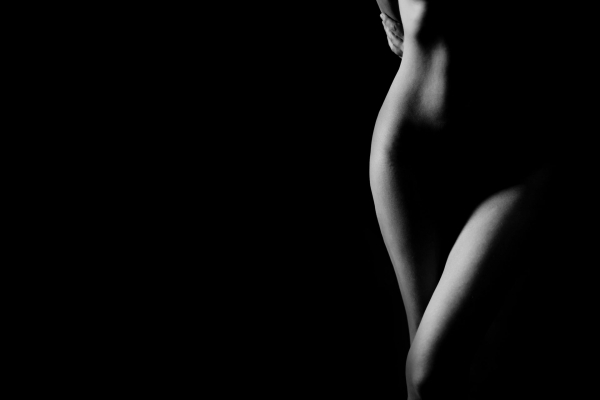
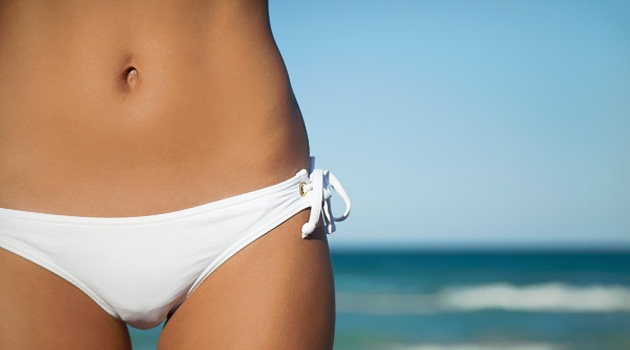
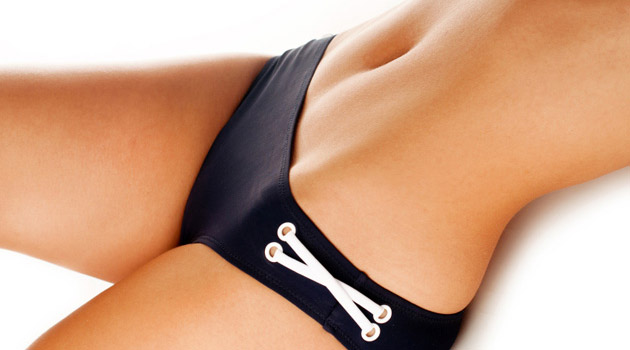

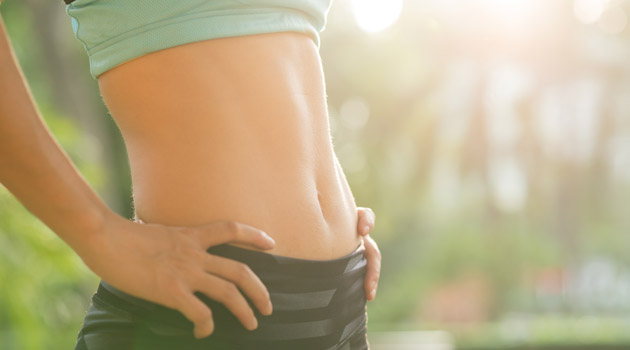
 IMCAS Paris 2019 - Shaping the hourglass: sculpting the waist with the one incision Papillon Technique
IMCAS Paris 2019 - Shaping the hourglass: sculpting the waist with the one incision Papillon Technique Πλαστική χειρουργική: Επαναστατικές τεχνικές με ελληνική υπογραφή - Συνέντευξη στο vita
Πλαστική χειρουργική: Επαναστατικές τεχνικές με ελληνική υπογραφή - Συνέντευξη στο vita  Κοιλιοπλαστική Non Touch Non Pain - 11ο Πανελλήνιο Συνέδριο Πλαστικής Χειρουργικής
Κοιλιοπλαστική Non Touch Non Pain - 11ο Πανελλήνιο Συνέδριο Πλαστικής Χειρουργικής  Νέα επαναστατική τεχνική στην κοιλιοπλαστική No touch - No pain - No drain
Νέα επαναστατική τεχνική στην κοιλιοπλαστική No touch - No pain - No drain  Κοιλιοπλαστική - Μαρτυρίες ασθενών αμέσως μετά το χειρουργείο
Κοιλιοπλαστική - Μαρτυρίες ασθενών αμέσως μετά το χειρουργείο  Η Νέα Κοιλιοπλαστική χωρίς πόνο όπως παρουσιάστηκε στο MEGA!
Η Νέα Κοιλιοπλαστική χωρίς πόνο όπως παρουσιάστηκε στο MEGA! LIVE - Κοιλιοπλαστική και ανόρθωση στήθους
LIVE - Κοιλιοπλαστική και ανόρθωση στήθους Παχυσαρκία Κυκλοτερής Λιπεκτομή Κοιλιοπλαστική EXTREME MAKE OVER - MEGA
Παχυσαρκία Κυκλοτερής Λιπεκτομή Κοιλιοπλαστική EXTREME MAKE OVER - MEGA MACS face lift, Κοιλιοπλαστική Ανόρθωση Στήθους EXTREME MAKE OVER - MEGA
MACS face lift, Κοιλιοπλαστική Ανόρθωση Στήθους EXTREME MAKE OVER - MEGA
 CAUTION! SURGERY VIDEO
CAUTION! SURGERY VIDEO CAUTION! SURGERY VIDEO
CAUTION! SURGERY VIDEO CAUTION! SURGERY VIDEO
CAUTION! SURGERY VIDEO CAUTION! SURGERY VIDEO
CAUTION! SURGERY VIDEO CAUTION! SURGERY VIDEO
CAUTION! SURGERY VIDEO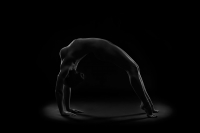
 Send us your questions
Send us your questions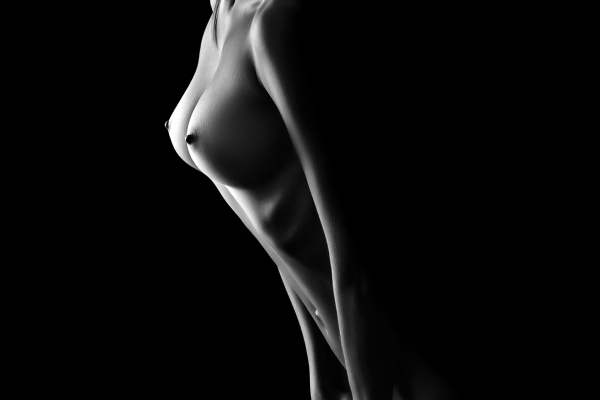





















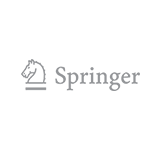





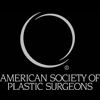
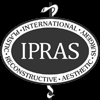
Follow us

